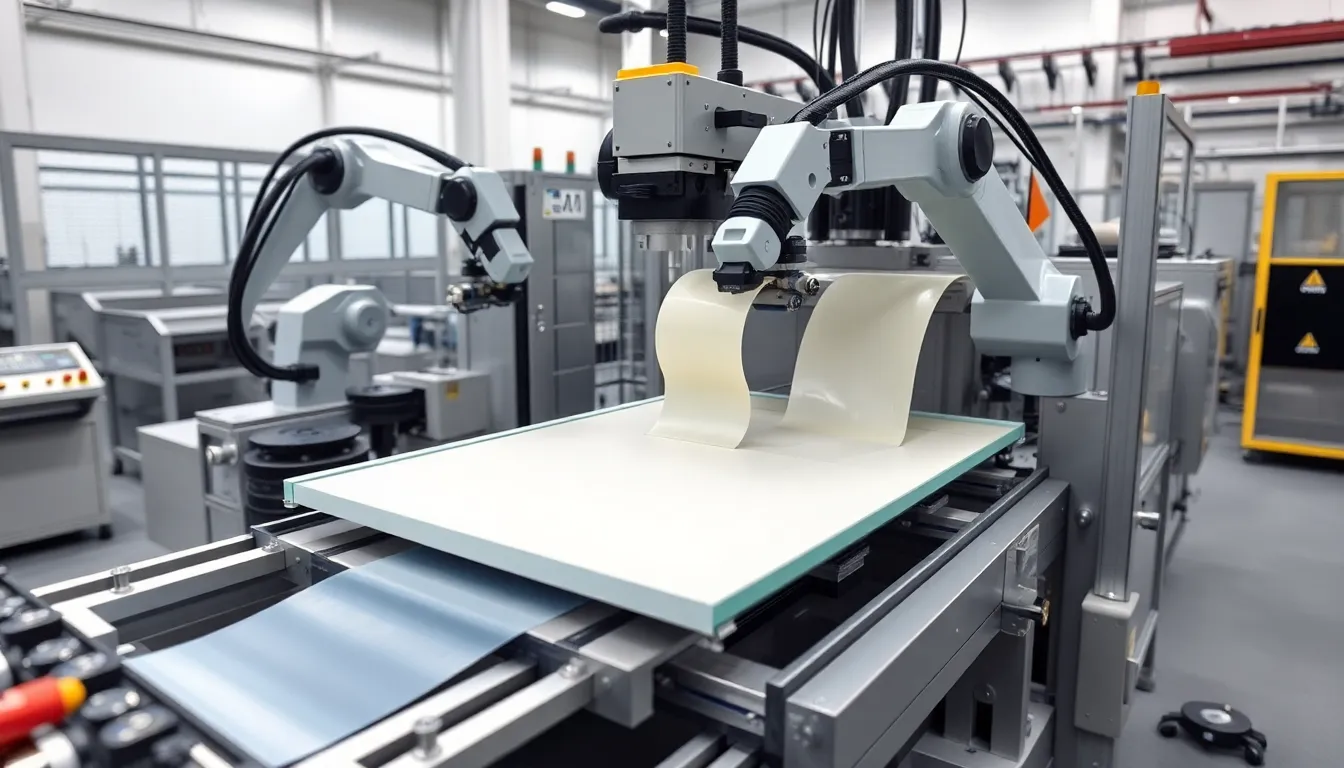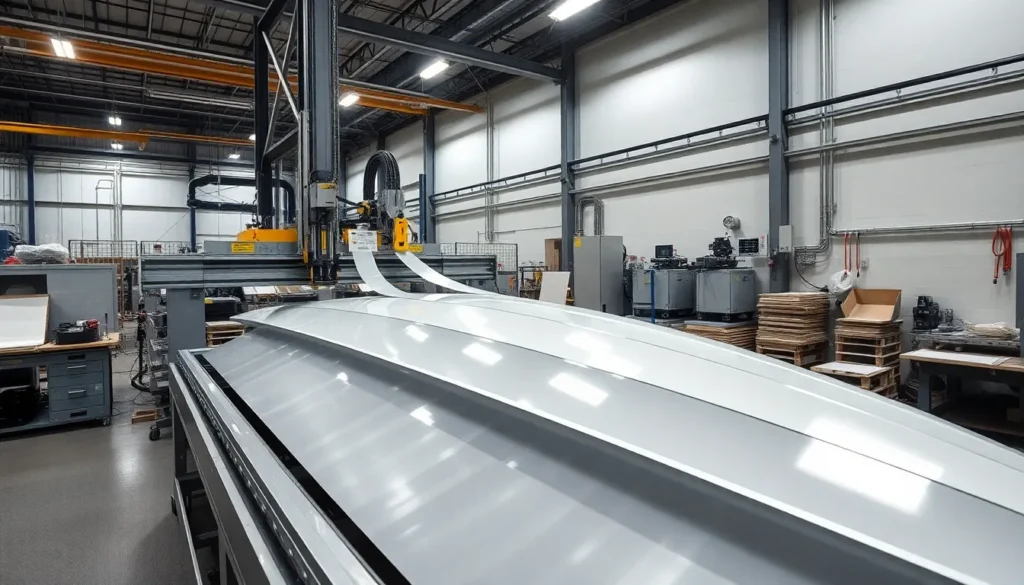In a world where technology evolves faster than a cat meme goes viral, ATL technology is the unsung hero of manufacturing. This innovative approach to automated tape laying is revolutionizing how industries create composite structures. Imagine building a plane or a sports car with precision and speed that would make even the most seasoned craftsman nod in approval.
ATL Technology
ATL technology, or Automated Tape Laying technology, revolutionizes the manufacturing sector by streamlining the production of composite materials. With automation at its core, this method enhances precision and reduces human error. Companies utilize ATL to create lightweight yet robust structures for various applications, especially in aerospace and automotive industries.
Using synchronized robotics, ATL machines deposit adhesive tape layers on surfaces accurately. Layers can be applied in various orientations, optimizing material strength and reducing waste. This flexibility leads to faster turnaround times, enabling manufacturers to meet strict deadlines for projects.
Composite structures benefit from ATL technology due to its consistency and repeatability. Notably, the process allows for the construction of complex geometries that involve intricate designs. Many manufacturers rely on ATL to minimize labor costs while maximizing output quality.
Data reflecting industry trends show a notable increase in demand for ATL applications, emphasizing its impact on production efficiency. According to recent statistics, manufacturers reporting high satisfaction rates cite ATL as a major factor in reduced production times. These advancements highlight the technology’s ability to reshape manufacturing practices.
Innovations continue as engineers develop more efficient tape materials that cater to specific requirements. Future projections indicate ATL will expand into other sectors beyond aerospace and automotive. Overall, this technology represents a leap forward in automated manufacturing, with far-reaching implications for the construction of composite materials.
Key Features of ATL Technology

ATL technology enhances manufacturing processes significantly. Key benefits include improved efficiency and cost-effectiveness.
Enhanced Efficiency
Automated Tape Laying technology streamlines production workflows immensely. Deploying synchronized robotics, ATL systems apply adhesive tape layers with precision. Manufacturers experience reductions in production time due to the automation of complex tasks. An increase in material strength occurs because the technology optimizes tape placement in various orientations. Robotics ensure consistent results, eliminating human error, which further boosts productivity. Rapid turnaround times enable companies to meet industry demands. Effective use of resources minimizes waste, reinforcing overall operational efficiency.
Cost-Effectiveness
Cost reductions characterize ATL technology’s impact on manufacturing. Labor expenses decrease since automated systems take over time-consuming manual processes. Manufacturers achieve higher output quality while requiring fewer resources for production. The technology’s precision leads to less material wastage, supporting budget efficiencies. Investments in ATL systems pay off as they increase production capacity without substantial increases in overhead costs. Reports indicate that many manufacturers realize significant savings alongside improved production rates. ATL technology delivers a compelling return on investment, making it attractive for various industries.
Applications of ATL Technology
ATL technology plays a pivotal role across various industries, revolutionizing how composite structures are manufactured. Its impact is evident in sectors such as aerospace, automotive, and marine, where precision and speed are paramount.
Industries Benefiting from ATL
Aerospace manufacturers significantly benefit from ATL technology. They utilize automated tape laying to produce lightweight, high-strength components that meet stringent safety and performance standards. Automotive industries also leverage ATL for crafting lightweight structures, enhancing fuel efficiency and reducing emissions. Marine companies apply ATL processes to build durable vessels with complex shapes, optimizing material usage. Renewable energy sectors, particularly wind turbine manufacturers, benefit by creating robust composite blades that withstand harsh conditions.
Case Studies
One example involves Boeing, which implemented ATL technology in the production of its 787 Dreamliner. This application led to marked reductions in assembly time and improvements in overall component strength. Another case is Tesla; it adopted ATL for battery pack manufacturing, resulting in enhanced production efficiency and decreased costs. Moreover, Airbus employs ATL technology in wing manufacturing, achieving precision and consistency that traditional methods cannot match. These case studies illustrate the transformative capabilities of ATL technology across various fields.
Advantages of Using ATL Technology
ATL technology offers numerous advantages that impact production efficiency and product quality significantly. Enhanced efficiency comes from automation, where synchronized robotics streamline complex tasks.
Cost-effectiveness follows closely, as decreasing labor expenses occurs through the automation of manual processes. By minimizing the potential for human error, ATL technology further boosts productivity.
Flexibility plays a vital role in allowing manufacturers to adjust tape layers to optimize material strength. Organizations benefit from faster turnaround times, enabling them to meet strict deadlines easily.
The technology supports the construction of complex geometries, ensuring high-quality outputs with intricate designs. Manufacturers experience reduced material wastage, which contributes to budget efficiencies over time.
Maximized output quality occurs alongside increased precision, making ATL a competitive choice for various industries. These benefits all contribute to a convincing return on investment, making the technology appealing for growing sectors.
Overall, ATL technology demonstrates significant advantages, solidifying its role in advancing automated manufacturing processes and enhancing composite material construction across industries.
Future Trends in ATL Technology
Innovations in ATL technology shape future manufacturing processes significantly. Industry experts predict increased integration of machine learning to enhance automated tape laying applications. This evolution aims to improve process customization, enabling systems to adapt quickly to diverse project requirements. As manufacturers push for greater efficiency, the demand for advanced robotics in ATL machinery continues to rise.
Expansions in material science promise next-generation tape solutions. These new materials will likely offer improved adhesion properties and reduced environmental impact, aligning with sustainability goals in manufacturing. Technological advancements may lead to further decreases in material waste, further solidifying ATL’s position as an eco-friendly alternative in composite construction.
Manufacturers in the aerospace and automotive sectors are set to leverage augmented reality for training and maintenance. Augmented reality tools enhance operator efficiency by providing real-time data overlays, facilitating easier troubleshooting and increasing productivity. Advanced simulation technologies will emerge, allowing producers to optimize designs before physical production begins.
Growth in the renewable energy sector presents fresh opportunities for ATL technology. With rising global standards for renewable energy sources, wind turbine manufacturers increasingly adopt ATL for constructing efficient, lightweight blades. Increased investment in offshore wind farms will drive demand for durable composite materials, showcasing ATL’s versatility.
Automated quality control is expected to experience substantial advancements. Implementing AI-driven inspection systems will ensure real-time monitoring of production processes. These systems will proactively identify defects and maintain quality standards, enhancing consumer confidence in ATL-manufactured products.
ATL technology evolves continually, remaining at the forefront of automated manufacturing solutions. With ongoing improvements and market expansions, it transforms industries while addressing efficiency and sustainability challenges head-on.
Conclusion
ATL technology is reshaping the landscape of manufacturing by delivering unmatched precision and efficiency. Its ability to automate complex processes not only enhances production speed but also minimizes waste and human error. As industries increasingly adopt ATL, the benefits become clear—reduced costs and improved output quality are just the beginning.
The future of ATL holds exciting possibilities with advancements in machine learning and next-generation materials. These innovations promise to further enhance its applications across various sectors, from aerospace to renewable energy. As manufacturers continue to embrace this transformative technology, ATL is poised to lead the way in modernizing composite material construction.
